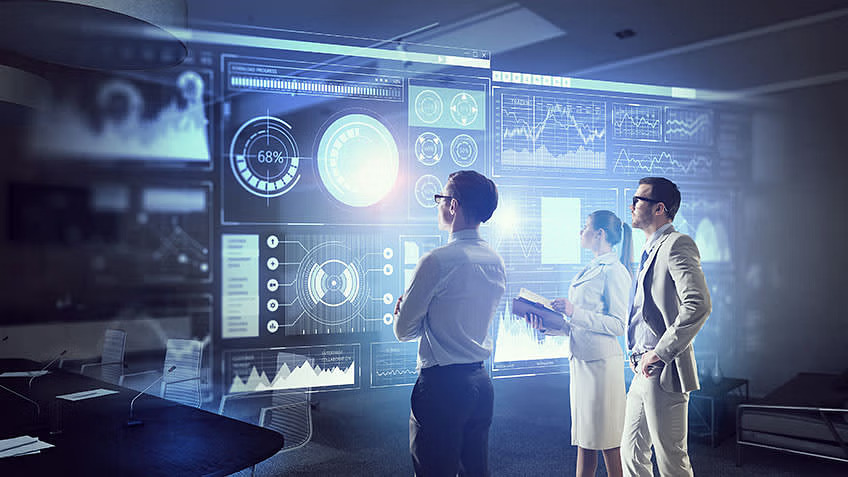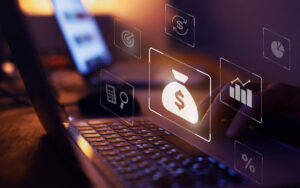Raw dinner ingredients are nice things to have in your kitchen, but they need to be prepared and processed into an actual meal to do people good. So it is with data. That’s why we need data processing.
This article answers the question, “What is data processing?” We will look at the data processing cycle, the types and methods of data processing, some examples, and a look at data processing’s future. We’ll also share a way to learn how to perform data processing through online data science training.
So, what is data processing, anyway?
What Is Data Processing?
Data processing is the method of collecting raw data and changing it into usable information. It is typically performed in a multi-step process by an organization’s teams of data scientists and data engineers. The raw data is collected, filtered, sorted, analyzed, processed, stored and provided to the appropriate parties in a readable format.
Data processing is critical for businesses to develop better strategies and sharpen their competitive edge. By changing the data into readable formats like charts, graphs and documents, relevant organization members can comprehend and use the data.
Let’s look at the data processing cycle to see how this works.
Also Read: Top 36 Statistics Interview Questions for Data Scientists
The Data Processing Cycle
Here’s the data processing cycle, broken down into six steps:
Collection
Raw data includes website cookies, monetary figures, profit and loss statements, user behavior, etc. Raw data collection starts the data processing cycle. Since the quality and type of the collected raw data impact the output, it should be gathered from accurate and defined sources to produce valid and usable findings.
Preparation
Data preparation (or data cleaning) sorts and filters the raw data to remove inaccurate and unnecessary data. Raw data is checked for duplication, errors, and incorrect or missing data, then transformed into appropriate forms for further analysis and processing. This step ensures that only the best quality data gets fed into the processing unit.
Input
Next, the raw data is changed into machine readable form and fed into the processing unit. This process can involve data entry through a keyboard, scanner or additional input source.
Data Processing
The raw data is now subjected to different data processing methods using artificial intelligence and machine learning algorithms to create a desirable output. This step can vary slightly from process to process depending on the processed data’s source (e.g., online databases, data lakes, connected devices, etc.) and the output’s intended use.
Output
The data is finally transmitted and displayed to users in readable forms such as tables, documents, graphs, vector files, audio, video, etc. The output can also be stored and processed in future data processing cycles.
Storage
The last step of the cycle involves storage, where data and metadata are stored for further use. This storage process allows for quick future access and information retrieval as needed and lets the information be used directly as input in the subsequent data processing cycle.
Data Processing Methods
There are three accepted methods of data processing.
- Manual data processing. The whole process of data collection, including filtering, sorting, calculation, and miscellaneous logical operations, is carried out by human intervention and without using any other electronic devices or automation software. This low-cost method requires little to no tools but is susceptible to high errors, high personnel costs, and boring redundancy due to how long it takes.
- Mechanical data processing. With this method, data is processed mechanically by devices and machines. In this case, machines can even include simple devices such as typewriters, calculators, printing presses, etc. This method best suits simple data processing operations and has considerably fewer errors than manual data processing. However, the increased data generated today has made this method more complex and challenging.
- Electronic Data Processing. We have now come to the most widely accepted data processing method. This method processes data with modern technologies typically associated with data processing software and programs. The software receives a set of instructions to process the data and produce output. Although this method is the most expensive, it provides the fastest processing speeds, highest reliability, and output accuracy.
Also Read: Why Use Python for Data Science?
The Types of Data Processing
Many types of data processing are suited to different needs. No two organizations are the same, and having multiple choices for data processing ensures that a company’s unique data needs can be met.
- Batch processing. Data is collected and processed in batches. This method is normally used for large amounts of data.
- Real-time processing. Best used for small amounts of data, this method processes data within seconds when the input is given.
- Online processing. Typically used for continuous data processing, online processing automatically feeds data into the CPU as soon as it becomes available.
- Multi-processing. Also called parallel processing, it breaks down data into frames and is processed using two or more CPUs on a single computer system.
- Time-sharing. Allocates computer resources and data using time slots to multiple simultaneous users.
Now, let’s review a small sample of data processing examples.
What is Data Processing? Examples
We can find examples of data processing everywhere today. For instance:
- A digital marketing company that uses demographic data to strategize location-specific campaigns.
- Stock trading software that converts millions of bits of transactional stock data into a simple, easy-to-read graph.
- An e-commerce company that uses their customers’ search history to recommend similar products (e.g., Amazon, Netflix).
- Self-driving cars use real-time data from built-in sensors to detect pedestrians, obstacles and other cars on the road.
Now, what does the future hold for data processing?
Also Read: Top 9 Data Science Projects With Source Code to Try
Making a Move From Data Processing to Analytics
Big data is the biggest, most significant game-changer in today’s business world. Although it involves dealing with an amazing amount of information, you can’t deny its benefits. That’s why organizations and businesses that want to stay competitive in today’s high-tech digital marketplace need an effective data processing strategy.
Analytics, the field of finding, interpreting, and communicating meaningful patterns in data, is data processing’s logical progression. While data processing changes data from one form to another, analytics takes these newly processed forms of data and makes sense of them.
But regardless of which of these processes data scientists use, the overwhelming volume of data and the analysis of its related processed forms demands superior storage and access capabilities. Fortunately, as we’re about to see, the future holds the answer.
The Future of Data Processing
The future of data processing lies in the clouds. Or, to be specific, cloud computing! While the six steps of data processing remain unchanged, cloud technology offers remarkable advances in data processing technology. These innovations give data analysts and scientists the most advanced, fastest, cost-effective and efficient data processing methods.
The cloud allows companies to merge their platforms into one centralized system that’s easy to work with and adjust. Cloud technology permits the seamless integration of new updates and upgrades to legacy systems while offering organizations convenient scalability.
Cloud platforms are also highly affordable and serve to level the playing field between large organizations and smaller companies.
So, it looks like the same IT innovations that gave us big data and its related challenges have also given us the solution. The cloud can handle the massive workloads commonly encountered in big data operations.
Now, let’s talk about your future in data processing.
Also Read: Technology at Work: Data Science in Finance
Do You Want a Career in Data Science?
If you want a career in this exciting, growing field, start with this intense, 24-week data science bootcamp. You will be taught the necessary data science and generative artificial intelligence skills required to upskill your current skillset or help prepare you for a future in data science.
The Glassdoor.com website reports that data scientists in the United States earn an average yearly salary of $129,127. Check out this bootcamp and upgrade your data processing skills. It could very well open new doors for you.
FAQ
Q: What are examples of data processing?
A: Examples include:
- Self-driving cars using real-time data to navigate
- E-commerce companies using customer purchasing histories for recommendation engines
- Digital marketing companies using demographic data to construct region-specific marketing ad campaigns
- Data preprocessing in machine learning
Q: What are the types of data processing?
A: The data processing types are:
- Batch processing
- Real-time processing
- Online processing
- Multi-processing
- Time-sharing
Q: What are the stages of data processing?
A: Stages of data processing include:
- Collection
- Preparation
- Input
- Data processing
- Output
- Storage
Q: Why is data processing necessary?
A: Data processing is essential today because it’s needed to handle increasingly larger volumes of data, especially when dealing with big data. Additionally, data processing provides accurate, actionable information that allows companies to create more successful business strategies and remain competitive in today’s high-pressure digital marketplace.
Q: What is data processing software?
A: Data processing software consists of an ordered set of statements or instructions that, when run by a computer, cause it to process the data. This software also includes any program or sets of programs, routines or procedures used to work with and control computer hardware capabilities.
You might also like to read:
What is a Data Warehouse? Characteristics, Architecture, Types, and Benefits
10 Top Data Collection Tools For Data Science Professionals
What Are the Components of Data Science?
Is Data Science Hard? What Does It Take to Get Into the Field?
What is Bayesian Statistics, and How Does it Differ from Classical Methods?






